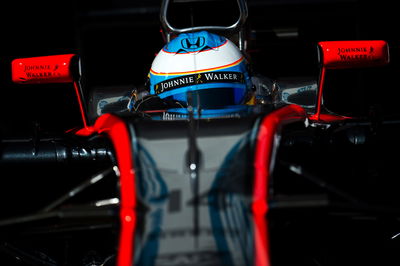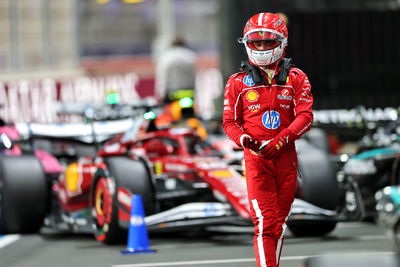McLaren blames wind for Alonso crash, slams electrocution rumours

McLaren says Fernando Alonso's crash on the final day of F1 pre-season testing at the Circuit de Catalunya was probably down to 'unpredictable gusty winds' at turn three, emphatically denying the influence of mechanical problems or an 'electrical discharge'.
The Spaniard spent a night in hospital - and is expected to do so for a second evening - after crashing on the exit of turn three on the final day of testing. The Spaniard was airlifted to hospital after being sedated, though McLaren later confirmed that CT scans revealed no injury beyond a concussion.
Since the crash - which happened on an out-lap and occurred at a relatively medium speed 150kph -, McLaren has pored over data to determine fault.
Though it is still carrying out a full analysis, McLaren has concluded that Alonso is likely to have run wide onto the Astroturf at the entry of the corner after the car was unsettled by a gust of wind, ultimately pitching it into a spin and into the wall right-front first.
A similar incident would befall Alonso's countryman Carlos Sainz later in the day, while several drivers would later note that the turn was proving tricky in the particularly windy weather.
"Over the past 24 hours, we have been carrying out a detailed analysis of the damage to Fernando's car, and its associated telemetry data, in order fully to understand the cause, or causes, of his accident. Even at this early stage, we have been able to reach some firm conclusions.
"His car ran wide at the entry to Turn Three - which is a fast uphill right-hander - allowing it to run onto the Astroturf that lines the outside of the track. A consequent loss of traction caused a degree of instability, spitting it back towards the inside of the circuit, where it regained traction and struck the wall side-on.
"Our findings indicate that the accident was caused by the unpredictably gusty winds at that part of the circuit at that time, and which had affected other drivers similarly (eg, Carlos Sainz Jnr).
McLaren went on to state that it has categorically ruled out any influence of mechanical issues, in particular media rumours that he may have been electrocuted by the ERS or that he was unconscious either at the time of the accident.
"We can categorically state that there is no evidence that indicates that Fernando's car suffered mechanical failure of any kind. We can also confirm that absolutely no loss of aerodynamic pressure was recorded, which fact indicates that the car did not suffer any aerodynamic loss, despite the fact that it was subjected to a significant level of g-force. Finally, we can also disclose that no electrical discharge or irregularity of any kind occurred in the car's ERS system, either before, during or after the incident.
"That last point refutes the erroneous rumours that have spread recently to the effect that Fernando was rendered unconscious by an electrical fault. That is simply not true. Our data clearly shows that he was downshifting while applying full brake pressure right up to the moment of the first impact - something that clearly would not have been possible had he been unconscious at the time.
"Our data also confirms that Fernando's car struck the inside concrete wall, first with its front-right wheel and then with its rear-right. It was a significant lateral impact, resulting in damage to the front upright and axle.
After the initial impact, the car slid down the wall for about 15 seconds before coming to a halt. All four wheels remained attached to the car, but no damage was sustained by the bodywork or crash structure between the front and rear wheels.
"We wish Fernando a very speedy recovery. As and when we have further updates to share, we will of course do so."











